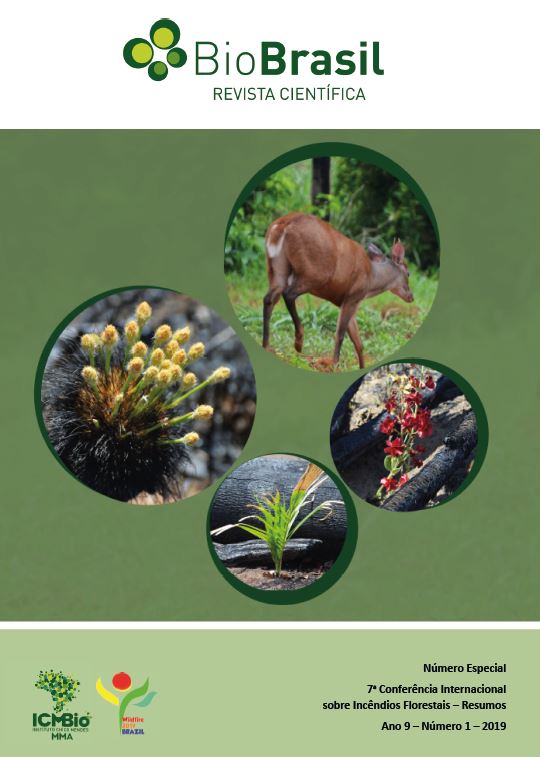Aerial incendiary device used for fire management in south Africa
DOI:
https://doi.org/10.37002/biodiversidadebrasileira.v9i1.1254Palavras-chave:
Aerial ignition, open ended fire breaksResumo
Prescribed burning, especially over large areas, is constrained by favorable fire weather periods and time. The burns facilitate a multitude of outcomes, from high intensity burns for the control of bush encroachment, to low intensity fuel load reduction under closed canopy commercial forestry plantations. Aerial ignition was introduced to enable the optimal use of the favorable weather windows by being able to safely control burn more area, in a shorter time, with minimal ground resources. An Aerial Incendiary Device was imported from Australia for under canopy burning to reduce pine litter layer in South African Pine Plantations. The litter layer is burnt off under ideal fuel and weather conditions to reduce fire risk and potential damage to trees from wildfires. After successful implementation of under canopy burning program the aerial ignition concept was expanded to other fire management activities. Large prescribed burns and longdistance fire breaks was implemented to utilize the limited prescribed burning days. With open ended fire breaks the ideal fuel and weather conditions are used to implement long distances of fire breaks in difficult terrain. A single or double line of incendiary capsules are dropped from a Helicopter to create a burnt fire break and extinguished by dew fall or low temperatures at night. High intensity prescribed block burns, up to 12,000 hectares, are ignited under high "fire danger" weather conditions, with prepared fire breaks wider than 50 meters to combat bush encroachment and invasive plant species. High intensity fires under moderate "fire danger" conditions, using multiple ignition and various ignition patterns to create "hot fires" for prescribed burns to combat bush encroachment, alien invasive vegetation and other invader plants in African savannahs and smaller areas tested up to 30 hectares. Future research is planned using similar techniques internationally. Fire suppression igniting a back burn to remove fuel in front of an approaching wild fire using aerial ignition. Natural or artificial fire breaks are used to control a line to ignite back fires in front of fast approaching wildfire to burn out fuel ahead of the fire.
Downloads
Referências
Best Operating Procedures for prescribed burns - Working on Fire
Best Operating Procedures for aerial ignition - Working on Fire
Best Operating Procedure (BOP) for the Development of Open Ended Fire Breaks (OEFB) using aerial ignitions with a helicopter and ground crews on the western boundary of the Kruger National Park in South Africa
Downloads
Publicado
Edição
Seção
Licença
Copyright (c) 2021 Biodiversidade Brasileira - BioBrasil

Este trabalho está licenciado sob uma licença Creative Commons Attribution-NonCommercial-NoDerivatives 4.0 International License.
Os artigos estão licenciados sob uma licença Creative Commons Atribuição-NãoComercial-SemDerivações 4.0 Internacional (CC BY-NC-ND 4.0). O acesso é livre e gratuito para download e leitura, ou seja, é permitido copiar e redistribuir o material em qualquer mídia ou formato.











